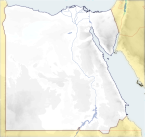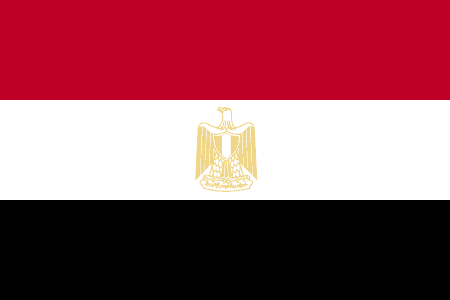Egypt Military Power Ranking 2025
MPR Rank: 16th
MPR SCORE: 1124
MPR Index: 0.5085 (1.0000 is perfect)
Reverse MPR Index: 0.4658 (0.0000 is perfect)
Z Score: +1.777 (standard deviations above the mean)
Overview
gypt ranks 16th globally in the 2025 Military Power Rankings (MPR), making it the most powerful military in Africa and a major force in the Arab world. Egypt’s strategic position at the crossroads of Africa, Asia, and the Mediterranean, particularly its control over the Suez Canal, gives it unique geopolitical importance. The Egyptian Armed Forces focus on territorial defense, anti-terrorism, and regional influence while maintaining a policy of non-alignment balanced by Western and Russian partnerships.
Egypt’s military power is derived from a large standing force, extensive foreign procurement, and significant investment in domestic arms production. Its modernization efforts span air, naval, and armored capabilities, supported by ties with France, Russia, the United States, and increasingly China.
Strengths:
Mass Forces and Multi-Vector Procurement
1. Massive Ground Forces with Heavy Armor
Egypt maintains over 450,000 active personnel, making it one of the largest standing armies in the world
Armored capabilities include:
1,300+ M1A1 Abrams tanks (co-produced with the U.S.)
T-90MS, T-80, and M60A3 tanks
Hundreds of APCs, IFVs, and self-propelled artillery units
Ground forces are structured into elite armored divisions, rapid reaction brigades, and counterterrorism units
2. Modernizing Naval Power with Regional Reach
Egypt is building a Mediterranean-capable navy, including:
2 Mistral-class amphibious assault ships (from France)
FREMM frigates, Gowind corvettes, Type 209 submarines, and Ambassador-class missile boats
Naval forces are responsible for:
Suez Canal security
Red Sea and Eastern Mediterranean operations
Counter-smuggling and anti-terror patrols
3. Diversified Air Force and Missile Capability
Egypt operates a multi-sourced air force featuring:
Rafale fighters, F-16s, MiG-29M/M2, and Su-35s
Apache helicopters, AW149s, and transport aircraft
Air defenses include:
S-300VM, Tor-M2, and Buk-M2 systems (Russian)
HAWK and NASAMS batteries (Western)
4. Regional Partnerships and Defense Production
Egypt co-produces:
Abrams tanks, APCs, rifles, and munitions
Strategic defense partnerships with:
U.S. (annual military aid, joint training)
Russia, France, China, and Italy
Hosts multinational exercises like Bright Star, Medusa, and Arab Shield
Why Egypt Is Ranked 16th
Egypt’s ranking reflects its large-scale manpower, multi-domain procurement, and strategic location, though it lacks expeditionary autonomy and advanced logistics.
1. No Strategic Deterrent or Global Strike Capability
Egypt does not possess:
Nuclear weapons
Ballistic or cruise missile systems beyond short-range artillery rockets
Strategic deterrence relies on conventional volume and alliance posture
2. Limited Sustainment and Joint Operations Integration
High platform diversity (U.S., Russian, French) complicates:
Logistics
Maintenance cycles
Interoperability
Defense planning remains conventional and static, less suited to modern expeditionary warfare
3. Economic Constraints on Military Expansion
Defense spending competes with pressing economic needs
Reliance on foreign aid and debt-financed procurement may slow long-term modernization efforts
Conclusion
Egypt possesses the most comprehensive military capability in Africa, backed by large-scale manpower, diverse foreign procurement, and a commanding geographic position. Its military plays a critical role in securing the Suez Canal, border regions, and regional stability.
In the MPR framework—where force volume, regional autonomy, and multi-domain readiness are weighted—Egypt ranks 16th, just ahead of Saudi Arabia. Its power is regional, not global, but remains formidable within the Middle East–North Africa (MENA) theater.
Military Strength and Force Projection
Active Military Personnel: 438,500 (IISS 2023)
Reserve Personnel: 480,000 (CIA World Factbook)
Paramilitary Forces: 397,000 (IISS 2023)
Egypt maintains a large, well-trained force that is critical for regional stability and force projection across the Middle East and Africa.
Ground Forces
Main Battle Tanks (MBTs): 4,394 (SIPRI 2023, IISS 2023)
Armored Fighting Vehicles (AFVs): 6,000+ (Jane’s Defence 2023)
Artillery Pieces (Self-Propelled and Towed): 2,300+ (IISS 2023)
Egypt possesses one of the largest tank and artillery fleets in the world, making it a formidable ground force capable of defending national interests and engaging in regional conflicts.
Air Force
Combat Aircraft: 304 (IISS 2023)
Attack Helicopters: 80 (Jane’s Defence 2023)
Egypt’s air force is equipped with F-16 Fighting Falcons, Rafales, and other modern jets, ensuring air superiority over regional adversaries.
Aircraft Breakdown:
F-16C/D Fighting Falcon: 218 (backbone of the fleet; mix of Block 40/52 variants)
Rafale EM/DM: 24 (French-supplied, multirole platform)
MiG-29M/M2: 46 (Russian twin-engine fighters)
Su-35: 12 (delivery status uncertain due to pressure from Western partners)
Mirage 2000: 15 (legacy aircraft)
AH-64D/E Apache: 46 (attack helicopter force)
AW149 / AW139: 30+ (utility helicopters)
C-130 Hercules & CASA C-295: 30+ (transport and logistics aircraft)
Naval Forces
Total Naval Assets: 245 (IISS 2023)
Submarines: 4 (SIPRI 2023)
Frigates and Corvettes: 7 (Jane’s Defence 2023)
Egypt’s navy is the largest in Africa and plays a key role in securing the Mediterranean Sea and the Red Sea. Its Mistral-class helicopter carriers and modern frigates enhance its force projection capabilities.
Missile Capabilities
Egypt is steadily enhancing its missile defense systems, acquiring both domestic and foreign missile technologies to strengthen its air defense and secure key assets like the Suez Canal.
Military Technology and Modernization
Egypt continues to modernize its military equipment, particularly in naval power and air force assets. Recent acquisitions of Rafale fighters and Mistral-class helicopter carriers from France highlight its focus on modern warfare.
Alliances and Strategic Partnerships
Egypt’s strategic alliances, particularly with the United States and France, significantly enhance its military power projection and defense capabilities. It also plays a key role in Arab League security initiatives.
Military History & Combat Experience
Egypt’s military history is among the most extensive in the Arab world, shaped by Arab-Israeli wars, border conflicts, and internal security operations. Its combat experience spans large-scale conventional warfare, urban operations, and counterterrorism.
Arab–Israeli Wars (1948–1973): Egypt fought in four wars against Israel:
1948 War: Egypt intervened in Palestine; the campaign ended in defeat.
1956 Suez Crisis: Egypt nationalized the Suez Canal and faced a joint invasion by Britain, France, and Israel; politically a success for Egypt despite military setbacks.
1967 Six-Day War: Suffered a crushing defeat and lost the Sinai Peninsula.
1973 Yom Kippur War: Egyptian forces achieved initial success by crossing the Suez Canal and breaching the Bar Lev Line, though Israel eventually pushed them back. The war restored military credibility and laid the groundwork for peace with Israel.
Libya Border Conflict (1977): A brief but intense border skirmish with Libya, showcasing Egypt’s rapid reaction capability and armored superiority.
Sudan Operations and Nile Security: Egypt maintains strategic pressure over Upper Nile regions and has engaged in joint border security operations near Sudan and South Sudan.
Sinai Insurgency (2011–Present): Egypt has battled Islamist insurgents in the Sinai Peninsula, deploying elite units and drones. Operations involve:
Counter-IED warfare
Urban clearance
Air-ground coordination
Despite progress, the campaign remains ongoing, with periodic flare-ups.
Red Sea and Anti-Piracy Deployments: The navy and air force patrol the Red Sea, countering piracy and protecting SLOCs. Egypt also participates in multinational maritime security operations near the Bab el-Mandeb Strait.
Egypt’s combat experience reflects a transition from state-on-state warfare to internal stability operations and regional maritime defense. It retains a battle-hardened officer corps, though its military culture is shaped more by deterrence than power projection.
General Information
Demographics and Geography
Population: ~113.5 million (2024 est.)
Population Available for Military Service: ~42 million (males and females aged 18–49)
Geographic Area: 1,001,450 km²
Land Boundaries: 2,665 km
Bordering Countries: Libya, Sudan, Israel, Gaza Strip (Palestinian territories)
Coastline: 2,450 km (Mediterranean and Red Sea)
Climate: Desert; hot, dry summers with moderate winters
Terrain: Vast desert plateau interrupted by Nile valley and delta
Natural Resources: Petroleum, natural gas, iron ore, phosphates, manganese, limestone, gypsum, talc
Proven Oil Reserves: ~3.3 billion barrels
Proven Natural Gas Reserves: ~2.2 trillion cubic meters
Economic Indicators
Defense Budget (2025): ~$10.6 billion USD (estimate; includes off-budget military revenues)
Defense Budget as % of GDP: ~1.7% (estimate)
GDP (PPP): ~$1.78 trillion USD
GDP per Capita (PPP): ~$15,700
External Debt: ~$165 billion USD
Military Expenditure Trend (last 5 years): Increasing procurement, especially from France, Russia, and domestic production
Military Infrastructure and Readiness
Military Service Obligation: Mandatory for males (12–36 months, depending on education)
Primary Defense Focus: Border defense, Red Sea and Suez Canal security, counterterrorism in Sinai
Military Industry Base: Large state-owned defense sector; key entities include Arab Organization for Industrialization (AOI), Ministry of Military Production
Cyber/Electronic Warfare Capability: Developing; cyber defense under military intelligence and national security authority
Nuclear Warhead Inventory: None (non-nuclear state)
Major Military Districts / Commands: Northern, Eastern, Western, Southern, and Central military zones
Missile Inventory Highlights: Scud-B/C (legacy), Sakr rocket artillery, NASAMS and other SAMs from U.S., Russia, and Europe
Reservist Call-up Readiness / Timeline: Reserve system in place; able to mobilize former conscripts within 1–2 months
Reservist Force Size: Estimated 500,000–800,000 reservists
Space, Intelligence, and Strategic Infrastructure
Space or Satellite Programs: Operated by Egyptian Space Agency; satellites include EgyptSat-1, EgyptSat-A
Military Satellite Inventory: Limited; dual-use satellites for imagery and comms
Intelligence Infrastructure: Military Intelligence, General Intelligence Service (GIS), Homeland Security Sector
Intelligence Sharing Partnerships: Regional coordination with Gulf states, Israel (in Sinai), and Western partners
Airports (Total): ~83 (civilian and military)
Major Military Airports: Cairo West, Gebel el-Basur, Beni Suef, Mansoura, Inshas
Naval Power and Maritime Logistics
Merchant Marine Fleet: ~400 vessels
Major Ports: Alexandria, Port Said, Suez, Safaga, Ain Sokhna
Naval Infrastructure: Bases on both Mediterranean and Red Sea coasts; Mistral-class carriers, FREMM frigates, German submarines
Naval Replenishment Capability: Moderate; focused on coastal and regional support
Domestic Mobility and Infrastructure
Railway Network: ~5,000 km
Roadways: ~108,000 km
Energy and Fuel Logistics
Oil Production: ~600,000 barrels per day
Energy Imports: Net exporter of natural gas; imports some petroleum products
Strategic Petroleum Reserves: Limited publicly available data; estimated emergency reserves for 30+ days
Defense Production and Strategic Forces
Domestic Defense Production: Produces small arms, APCs, artillery, naval vessels, and munitions; growing UAV and electronics capacity
Military Installations (Domestic): Extensive; includes border posts, naval bases, airfields, and training zones across all regions
Military Installations (Overseas): None officially; military diplomacy active in Africa and the Arab world
Foreign Military Personnel Presence: U.S. operates a presence under MFO in Sinai; training exchange programs with Gulf and African states
Defense Alliances: No formal alliances; defense ties with U.S., Russia, France, UAE, and Saudi Arabia
Strategic Airlift Capability: Operates C-130s, IL-76s, and civilian-chartered logistics; limited strategic range
Wartime Industrial Surge Capacity: High domestic military economy allows for rapid production scaling
Research and Industry Support
Defense R&D Investment: Modest; focused on reverse engineering and UAVs, with Chinese and Russian cooperation
Key Wartime Industries Beyond Defense: EGPC (oil/gas), EgyptAir (transport), El Nasr (automotive), Arab Contractors (construction), state-owned steel/cement
Political and Administrative Structure
Capital: Cairo
Founding Date: July 23, 1952 (Republic declared after monarchy overthrown)
System of Government: Unitary presidential republic under semi-authoritarian model



